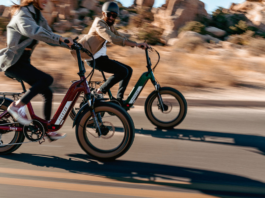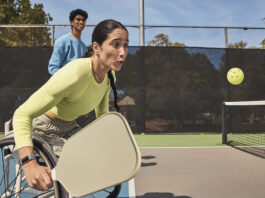
If you own a drone, or are looking to buy one for recreational purposes, it’s important to know the rules on how, when, and where to fly them. Drones can be a lot of fun, but they also come with responsibilities. Always ensure you follow local regulations to avoid fines and ensure everyone’s safety. Here’s what you need to know before you take to the skies.
Drone regulations in Canada
The initial Transport Canada regulations were announced on March 16, 2017 by the then-Transport Minister Marc Garneau, who cited safety as the primary reason for rolling back some of the previous looser rules. Those rules were to stay in effect for 12 months until a further set of amendments could follow. It wasn’t clear at the time what that would mean, but it’s all set now. The federal government first unveiled Canada’s new rules for remotely piloted aircraft systems on January 9, 2019, which then subsequently went into effect on June 1, 2019.
They apply to flying drones weighing between 250 grams and 25 kilograms and flown within a pilot’s line-of-sight, regardless of whether it is for recreational, work, or research use. That means you can’t pilot a drone that veers out of your viewpoint. Stick with those parameters, and you won’t need to apply for a special permission with Transport Canada to fly, other than following the requirements below. A key takeaway is that Canada’s regulations designate drone flights to fall under either of two categories: basic or advanced.
Basic operations
To operate within what the government considers to be “basic” conditions, you would be flying in uncontrolled airspace to start with. You would also have to avoid flying over bystanders and keep the drone at least 100 feet (30 metres) away horizontally from them.
There’s also a certification process. The basic one requires a “small basic exam” that costs $10 to complete, and you must be 14 years or older to get one. Eligible pilots can do it online; attending a drone flight school is not mandatory. The certificate never expires, but as the government says, “you need to keep your skills up-to-date” by completing at least one of the certificate programs.
Even after passing the exam and flying for hobbyist reasons, pilots will have to carry the valid drone certificate. Moreover, pilots will need to mark and register their drone, too. Once received, you’re obligated to mark the drone with that number before taking flight. It only takes a few minutes to register, and you will need a purchase date (if applicable), make, model, serial number, weight, and type of drone. The fee is $5.00, payable through online banking.
The full set of rules falling under the Canadian Aviation Regulations (CARs) is available here.
Advanced operations
If you do not meet all three of the conditions for basic operations, you are conducting advanced operations. For example, under advanced operations, you would be looking to fly in controlled airspace, over bystanders and within 100 feet (30 metres) of them horizontally.
The certification process to qualify is more intricate. You need to pass the “small advanced exam” and an in-person flight review to assess piloting ability. The drone you want to fly also has to meet the Remote Piloted Aircraft System (RPAS) safety assurance rating system, and manufacturers often submit a safety assurance declaration for their drones. You can see how to do that here.
The most popular models usually already comply, but if you’re not sure, contact the manufacturer directly to see if they have submitted a declaration for flying in Canada.
General drone flight guidelines
Regardless of whether you’re flying in a basic or advanced capacity, the guidelines below are standard throughout.
- Maintain line-of-sight at all times
- Don’t fly higher than 400 feet (122 metres) above the ground
- Don’t fly closer than 100 feet (30 metres) from people and animals for basic operations
- Keep a safe distance from buildings and vehicles at all times
- Don’t fly closer than 5.6 km from an airport, 1.9 km from a heliport
- Don’t fly within restricted airspace (drone software generally includes this anyway)
- Keep away from forest fires, outdoor concerts, and parades
- Don’t fly where it could interfere with police or first responders
- Avoid flying at night or into clouds
- Make sure your registration number is clearly marked on your drone
- Don’t fly a drone at all in any National Park across Canada. If it’s for commercial purposes, you’ll need a special Restricted Activity Permit.
The fine for breaking any of these rules ranges from $1,000-$3,000. Flying without a certificate (or with an unregistered/unmarked drone) will incur a $1,000 fine. It goes up to $3,000 if aircraft or people are put at risk. For corporations, the monetary penalty for these infractions is between $5,000-$15,000.
Special Flight Operations Certificate (SFOC)
This is a special certification that applies to visitors of Canada, so if you’re not a citizen or permanent resident, you will need to apply for one. Even if you are a Canadian citizen or permanent resident, some of the distinct rules are important to know. For example, if you want to fly drones at a show or event, or if you want to control five or more drones at one time, you do need an SFOC. This also applies if you’re already authorized or licensed in their home country.
If you need to fly your done out of sight, or if it weighs over 25 kg, those are also grounds for an SFOC. You can see the full list of rules so you know what falls under this category. This certificate exists purely to go beyond the limits set by the basic and advanced operations. Bear in mind it may take 30 business days to review and issue the pass.
Beyond line-of-sight operations
The Ministry of Transport is also considering a set of rules for Beyond Visual Line-of-Sight (BVLOS), or “lower-risk operations” when flying drones that go beyond the visual line-of-sight. This would allow delivering packages by drone to remote communities, first responder operations, natural wildlife surveillance and other potential uses. Here is how the ministry puts it:
“The proposed rules would require drones to be capable of detecting and avoiding other air traffic to ensure safety. They would also introduce a new class of pilot certification for lower-risk BVLOS operations, including a requirement to meet a new drone pilot medical standard, and eliminate the requirement to obtain a Special Flight Operations Certificate (SFOC) for certain lower-risk BVLOS and medium-sized drone operations.”
To be clear, to operate a “lower-risk” drone beyond visual line-of-sight means flying it at low altitudes, away from populated areas and away from any airport, helipad, or aerodrome. As it stands currently, some of the new rules could come into force as early as fall 2024, while others could do so on April 1, 2025.
Flying your drone safely in Canada
The rules affect city-dwellers more than rural residents for the simple reason that there are more people and obstructions in urban areas. Farmers who use drones to inspect crops from above will probably have nothing to worry about if they are in open country where buildings and people are fewer and farther between. Transport Canada inspectors can investigate reports of illegal or unsafe drone use. If you infringe on people’s privacy, they will also take that seriously. Local law enforcement are able to understand what the limits are for dealing with drones where a crime or privacy matter is involved.
If you use drones for wedding photography or videography, make sure to follow the rules and get advanced certification. That will cover you going forward. The same is true if you work in real estate, film, construction, or farming—among other vocations. You may also want liability insurance. It’s not required to a fly a drone, but could be useful coverage when using it around people.
If you have a drone that weighs less than 250g, you don’t need to be certified. Just exercise caution and be careful when flying. No matter the size, what you choose to do when flying is entirely up to you, so long as you respect the rules and regulations at all times. Avoid being reckless and stay out of harm’s way, and you’re more likely to enjoy the experience. The settings in drone apps usually have sections where you can apply manual limits in line with the rules if you want to make sure you don’t stray too high or too far.
You can check out all the drones currently available at Best Buy (all of which fall within the guidelines for size and weight).









































yes car drivers are more nuts then drone pilots the rules block out most major city sad but what ever could be just a bit dangerous the gov got to stick there thing in there and screw it up with licenses cash grab and dum rules I will not get a drone besides make in Asian countries
I am a pilot and have twice encountered drones flying is restricted airspace…..all those who think a drone is harmless and over regulated might be more concerned if a plane whatever size is brought down full of aviation fuel because some curious amateur decided to be a unregulated cowboy.Transport Canada rules are to protect everyone
OKay where do we fly a drone then? Not close to the public, so that rules out local parks, local beaches. Not along roads, so that rules out deserted roadways. Okay so drive up country and find a deserted field somewhere near the glacier. Ooops! that land is owned by somebody so don’t get caught flying your drone there or you’ll be fined $1,000.00 by the local Mountie! Starting to feel like a second class citizen? Why don’t they just come right out and BAN DRONES! and save everyone a lot of TIME and MONEY!!
Money grabbing is all there doing
I just read the “RULES” for flying a drone as of June 1st/19. Are you sure this isn’t the Communist China website or maybe north korean site and not the democratic free country Canada Best Buy site? Safety measures BS this paranoid government regulations.
safety for all equals communism? he is a Trump baby no doubt
Thanks for the information – I had no idea!